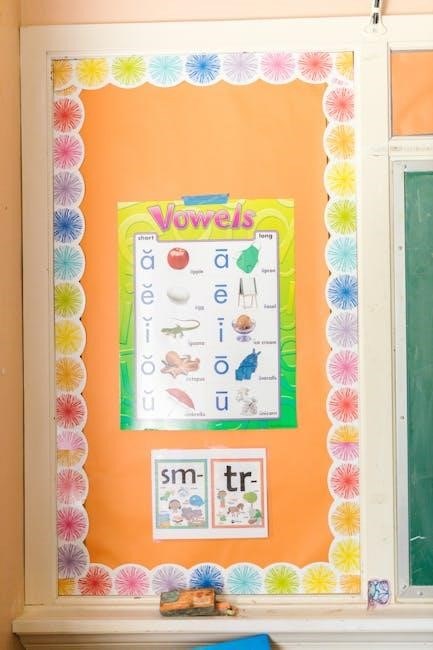The UPC Study Guide is a comprehensive resource designed to help professionals prepare for the Uniform Plumbing Code exam. It covers essential code requirements, practical applications, and exam strategies, ensuring a thorough understanding of plumbing standards and compliance.
1.1 Overview of the Uniform Plumbing Code (UPC)
The Uniform Plumbing Code (UPC) is a model code that establishes minimum requirements for plumbing systems, ensuring public health, safety, and environmental protection. It covers water supply, sanitary drainage, gas piping, and related fixtures/appliances. The UPC is adopted by jurisdictions to standardize plumbing practices, addressing materials, installation, and safety standards. It also includes provisions for venting, backflow prevention, and medical gas systems. Regular updates reflect advancements in technology and industry practices, making it a critical reference for plumbers, inspectors, and designers to ensure compliance and prevent hazards.
1.2 Importance of the UPC Study Guide
The UPC Study Guide is a vital resource for anyone preparing for the Uniform Plumbing Code exam or seeking to deepen their understanding of plumbing standards. It provides a structured approach to mastering the code, highlighting key concepts, and offering practical examples. By using the guide, professionals can ensure compliance with regulations, enhance their problem-solving skills, and stay updated on industry best practices. It is an essential tool for plumbers, inspectors, and contractors aiming to pass the exam and maintain high standards in their work.
1.3 Brief History of the UPC
The Uniform Plumbing Code (UPC) was first published in 1923 by the International Association of Plumbing and Mechanical Officials (IAPMO). It was created to standardize plumbing practices across the United States, ensuring safety, health, and sanitation. Over the years, the UPC has undergone numerous updates to incorporate advancements in technology, materials, and environmental considerations. Today, it is widely adopted and recognized as a benchmark for plumbing installations worldwide. The UPC study guide reflects these updates, helping professionals understand and apply the code effectively;
Understanding the UPC Exam Format
The UPC Exam evaluates knowledge of plumbing codes, safety standards, and compliance. It assesses the ability to apply the Uniform Plumbing Code effectively in real-world scenarios.
2.1 Exam Structure and Content
The UPC Exam is divided into sections that test knowledge of plumbing codes, safety protocols, and compliance standards. It includes multiple-choice questions covering topics such as water supply systems, drainage, venting, and gas piping. The exam assesses the ability to interpret and apply the Uniform Plumbing Code effectively. Candidates are evaluated on their understanding of installation requirements, material specifications, and safety measures. The structure ensures a comprehensive assessment of both theoretical knowledge and practical application, preparing professionals to meet industry standards and ensure public safety.
2.2 Types of Questions and Time Allocation
The UPC Exam features multiple-choice questions, calculation problems, and scenario-based queries. Candidates are allotted a specific time frame, typically 2-3 minutes per question, to ensure efficient problem-solving. The exam includes a mix of straightforward and complex questions, testing both knowledge and application skills. Time management is crucial, as the exam is timed, and candidates must balance thoroughness with speed. Practicing under timed conditions is highly recommended to improve accuracy and confidence during the actual test.
2.3 Exam Format: Paper-Based vs. Computer-Based
The UPC Exam is offered in both paper-based and computer-based formats. Paper-based exams provide a traditional testing experience, allowing candidates to mark and review questions easily. Computer-based exams offer a digital interface with timed sections and immediate scoring. Both formats require strong time management and attention to detail. Candidates should familiarize themselves with the chosen format beforehand to ensure comfort and confidence during the test. Understanding the format helps in optimizing performance and reducing exam-day anxiety.
Eligibility Criteria and Registration
The UPC exam requires certain specific eligibility criteria and follows a structured registration process to ensure all candidates meet professional standards and compliance requirements.
3.1 Who Should Take the UPC Exam?
The UPC exam is primarily intended for plumbing professionals, including contractors, inspectors, and engineers. It is ideal for those seeking certification to demonstrate expertise in plumbing codes and standards. Individuals involved in plumbing design, installation, or enforcement should consider taking the exam to enhance their career prospects and ensure compliance with safety regulations. The exam is also beneficial for apprentices and students aiming to enter the plumbing industry, as it validates their knowledge and skills in adhering to the Uniform Plumbing Code.
3.2 Educational and Work Experience Requirements
To be eligible for the UPC exam, candidates typically need a combination of education and work experience. A high school diploma or equivalent is often required, along with completion of a plumbing apprenticeship or relevant coursework. Many jurisdictions require 4-5 years of work experience in plumbing under a licensed professional. Specific certifications or training may also be necessary, depending on the jurisdiction. Candidates should verify their local requirements, as they may vary. Proper documentation, such as diplomas or training certificates, is usually needed to confirm eligibility.
3.3 Step-by-Step Registration Process
Registering for the UPC exam involves several organized steps. First, review the eligibility criteria to ensure you meet the requirements. Next, gather all necessary documents, such as proof of education and work experience. Create an account on the official testing website and complete the application form. Select your preferred exam date and location, then pay the registration fee. Submit any required documentation for verification. Once approved, you will receive confirmation and instructions for exam day. Following these steps ensures a smooth registration process.

Key Concepts and Topics Covered in the UPC
The UPC covers fundamental principles, including water supply systems, sanitary drainage, gas piping, and medical gas systems, ensuring safe and compliant plumbing practices.
4.1 General Requirements and Definitions
This section outlines the foundational principles of the UPC, including general requirements for plumbing systems, materials, and installations. It defines key terms and concepts, such as water supply, sanitary drainage, and vent systems, ensuring clarity and consistency in interpretation. The chapter also establishes the scope and application of the code, providing a framework for enforcing safety and health standards. Understanding these basics is essential for complying with the UPC and ensuring reliable, safe plumbing systems.
4.2 Water Supply Systems and Fixtures
This section covers the design, installation, and maintenance of water supply systems, including potable water distribution, protecting against contamination, and water quality standards. It details requirements for fixtures, such as faucets, valves, and appliances, ensuring they meet safety and efficiency standards. The chapter also addresses water conservation measures and cross-connection control, emphasizing proper installation to prevent health hazards. Understanding these principles is crucial for ensuring safe and reliable water supply systems in compliance with the UPC.
4.3 Sanitary Drainage and Vent Systems
This section focuses on the design and installation of sanitary drainage and vent systems, ensuring proper waste disposal and prevention of sewer gases. It covers drainpipe sizing, vent pipe requirements, and traps to maintain water seals. The chapter also addresses materials and connections for drainage systems, emphasizing compliance with UPC standards. Proper installation and maintenance are stressed to prevent clogs, backups, and health hazards, ensuring safe and efficient plumbing systems.
4.4 Gas Piping and Appliances
This section covers the installation and safety standards for gas piping and appliances, ensuring compliance with UPC requirements. It details material specifications, pipe sizing based on gas demand, and safety measures to prevent leaks and hazards. Proper ventilation and pressure testing are emphasized to guarantee system integrity. The chapter also addresses appliance connections and regulator installations, providing a comprehensive guide for safe and efficient gas system setups.
4.5 Medical Gas and Vacuum Systems
This section focuses on the installation, testing, and maintenance of medical gas and vacuum systems. It outlines UPC requirements for piping materials, pressure levels, and safety features to ensure patient safety. Topics include oxygen, nitrous oxide, and medical air systems, as well as vacuum system design. Proper labeling, testing, and documentation are emphasized to meet healthcare facility standards. Compliance with these guidelines is critical for preventing hazards and ensuring reliable operation in medical settings.
4.6 Swimming Pools and Hydromassage Bathtubs
This section covers the installation, safety, and hygiene standards for swimming pools and hydromassage bathtubs. It details UPC requirements for pool pumps, filters, and piping materials to ensure safe water circulation. For hydromassage bathtubs, the focus is on proper water supply, drainage, and ventilation to prevent contamination. Compliance with these guidelines ensures safe and functional systems while meeting local and national plumbing codes. Proper testing and maintenance are also emphasized to uphold user safety and system longevity.
Calculations and Formulas in the UPC

This section provides essential mathematical tools for UPC compliance, including pressure loss, pipe sizing, and flow rate calculations, ensuring accurate and safe plumbing system designs.
5.1 Pressure Loss Calculations
Pressure loss calculations are critical for designing efficient plumbing systems. The UPC provides formulas to determine friction losses in pipes, considering factors like pipe size, material, and fluid velocity. These calculations ensure proper system performance, preventing excessive pressure drops that could lead to inadequate water supply or system damage. By mastering these principles, professionals can design systems that meet UPC standards while optimizing water flow and energy efficiency. Accurate pressure loss analysis is essential for compliance and long-term system reliability.
5.2 Pipe Sizing and Flow Rates
Proper pipe sizing and flow rate calculations are essential for ensuring efficient and safe plumbing systems. The UPC provides detailed guidelines to determine the appropriate pipe diameter and material based on the expected flow rates, fluid type, and system requirements. Accurate sizing prevents issues like reduced water pressure, contamination risks, and increased energy costs. By following UPC methods and using provided charts, professionals can optimize system performance and ensure compliance with safety standards, crucial for passing the certification exam and maintaining system reliability.
5.3 Vent Pipe Sizing and Configuration
Proper vent pipe sizing and configuration are critical for maintaining atmospheric pressure in drainage systems, preventing siphonage, and ensuring safe venting of gases. The UPC provides specific sizing tables and formulas to determine the correct vent pipe diameter based on the system’s layout and fixture units. Proper configuration, including stack venting and circuit venting, ensures compliance with safety standards. Accurate sizing and installation prevent issues like trap siphonage and sewer gas intrusion, making this a key area of focus for exam preparation and real-world application.

Common Violations and Penalties
Common plumbing code violations include improper venting, incorrect pipe sizing, and inadequate drainage. Penalties may include fines, re-inspections, or system reconstruction. Compliance is crucial to avoid these issues.
6.1 Most Common Plumbing Code Violations
Common plumbing code violations include improper venting of sewer systems, incorrect pipe sizing, and inadequate drainage slopes. Other frequent issues involve improper installation of water heaters, backflow preventers, and grease traps. Violations often stem from incorrect materials, insufficient spacing, or failure to follow local amendments. These issues can lead to system failures, health hazards, or environmental risks. Understanding these common mistakes is crucial for compliance and safe plumbing practices. Regular inspections and adherence to UPC standards help mitigate these violations effectively.

6.2 Consequences of Non-Compliance
Non-compliance with the UPC can result in legal penalties, fines, and project shutdowns. Health and safety risks may arise from improper installations, leading to water contamination or gas leaks. Financial losses occur due to corrective measures, potential lawsuits, and reputational damage. Environmental harm from violations can also lead to additional legal consequences. Understanding these consequences emphasizes the importance of adhering to UPC standards to ensure public safety, avoid legal repercussions, and maintain professional integrity.
6.3 How to Avoid Common Mistakes
To avoid common mistakes, it is crucial to thoroughly understand the UPC requirements and stay updated on revisions. Conduct regular code reviews and ensure all installations meet specified standards. Double-check calculations for pipe sizing, vent configurations, and pressure loss to prevent errors. Use checklists to verify compliance during inspections. Proper documentation and collaboration with licensed professionals can also minimize risks. By adhering to these practices, you can significantly reduce the likelihood of violations and ensure safe, compliant plumbing systems;

Study Resources and Materials
Study Resources and Materials provide essential tools for mastering the UPC. Official guides, textbooks, online courses, and practice exams offer comprehensive preparation, ensuring a deep understanding of plumbing codes and standards.
7.1 Official UPC Study Guides and Manuals
Official UPC Study Guides and Manuals are authoritative resources for exam preparation. The Uniform Plumbing Code (UPC) publication is the primary reference, detailing code requirements, installation standards, and safety protocols. Supplementary materials include the Illustrated Plumbing Code and reference guides, offering diagrams, tables, and examples. These resources provide foundational knowledge, ensuring familiarity with code interpretations and practical applications. They are regularly updated to reflect the latest industry standards, making them indispensable for both beginners and experienced professionals aiming to excel in the UPC exam.

7.2 Recommended Textbooks and References
Several textbooks complement the official UPC materials, offering in-depth insights and practical examples. Titles like Plumbing Engineering Design Handbook and Modern Plumbing provide detailed explanations of code applications. These resources often include case studies, diagrams, and real-world scenarios, enhancing understanding of complex topics. Additionally, reference books like Plumbing Codes and Standards offer focused analyses of specific code sections. These materials are invaluable for reinforcing concepts and preparing for the exam, ensuring a well-rounded knowledge base.
7.3 Online Courses and Tutorials
Online courses and tutorials are excellent supplements to traditional study materials. Platforms like Udemy, Coursera, and specialized plumbing websites offer structured lessons on UPC topics. These courses often include interactive content, such as video lectures, quizzes, and downloadable resources. They provide flexibility, allowing learners to study at their own pace; Many courses are designed by industry experts, ensuring up-to-date and relevant information. Additionally, some programs offer forums or live Q&A sessions for clarification of doubts. These resources are ideal for those seeking a modern, engaging way to master UPC concepts.
7.4 Practice Exams and Mock Tests
Practice exams and mock tests are invaluable tools for assessing readiness for the UPC exam. They simulate real test conditions, helping candidates familiarize themselves with the format, timing, and types of questions. These resources often include questions similar to those on the actual exam, covering a wide range of topics. By identifying strengths and weaknesses, practice exams enable focused study. Many study guides and online platforms offer these tests, providing detailed feedback and explanations for incorrect answers. Regular practice builds confidence and improves time management skills, ensuring better performance on exam day.

Exam Preparation Strategies
Effective exam preparation involves creating a structured study schedule, employing active learning techniques, practicing time management to enhance performance and confidence during the UPC exam.
8.1 Creating a Study Schedule
A well-structured study schedule is crucial for effective exam preparation. Allocate specific time slots for each topic, ensuring coverage of all UPC sections. Prioritize challenging areas and include regular practice exams. Balance study sessions with breaks to maintain focus and retention. Regularly review and adjust the schedule to stay on track and address weaknesses. Consistency and flexibility are key to mastering the material and building confidence for the exam.
8.2 Effective Note-Taking Techniques
Effective note-taking is vital for retaining information while studying for the UPC exam. Use methods like the Cornell Method or outline formatting to organize key concepts. Summarize complex ideas in your own words and highlight critical code sections. Review and condense notes regularly to reinforce learning. Link related topics to build a cohesive understanding. Use symbols or abbreviations for quick reference. Active engagement with the material through note-taking enhances retention and helps identify areas needing further review.
8.3 Time Management During the Exam
Effective time management is crucial during the UPC exam. Allocate time evenly across all question types, prioritizing those you find easiest. Spend no more than 1-2 minutes per question initially, marking difficult ones for later review. Use the process of elimination to narrow down answers. Avoid getting stuck on a single question, as this can jeopardize your ability to complete the exam. Practice pacing yourself during mock tests to build confidence and efficiency. Staying calm and systematic ensures optimal performance.
8.4 Strategies for Difficult Questions
When faced with challenging questions, remain calm and methodical. Skip difficult questions initially, returning to them after completing easier ones. Use the process of elimination to narrow down options, and read each question carefully to identify key details. Focus on understanding the code principle being tested. If unsure, make an educated guess rather than leaving it blank. Time management is critical, so don’t spend too long on a single question. Practice these strategies during mock exams to build confidence and improve decision-making under pressure.
Post-Exam Procedures
After completing the UPC exam, candidates receive their results, which indicate pass or fail status. Successful candidates are certified, while others may need to retake the exam. Post-exam procedures also include maintaining certification through continuing education and staying updated on code revisions to ensure compliance and professional growth.
9.1 Understanding Exam Results
Exam results indicate whether a candidate has passed or failed the UPC certification. Scores are typically provided, along with a pass/fail status. The results outline areas of strength and weakness, helping candidates identify where improvement is needed. A passing score is usually 70% or higher, though this may vary. Candidates who pass receive certification, while those who fail are informed about the retake process. Understanding these results is crucial for next steps, whether it’s pursuing certification or preparing for a re-examination.

9.2 Retaking the Exam: What to Do Next
If you fail the UPC exam, it’s important to assess your performance and identify areas for improvement. Review the exam results to pinpoint weaknesses and focus your study efforts accordingly. Develop a structured study plan, emphasizing sections where you underperformed. Consider revisiting the UPC Study Guide and supplementary materials to reinforce your understanding. Additionally, practice with mock exams to build confidence and time management skills. Allow the required waiting period before retaking the exam, ensuring you are better prepared for success;

9.3 Maintaining Certification and Continuing Education
Maintaining your UPC certification requires completing continuing education courses to stay updated on code revisions and industry advancements. Many jurisdictions mandate ongoing education to ensure compliance with the latest standards. Engage in workshops, seminars, and online courses to enhance your knowledge and skills. Regularly review updates to the Uniform Plumbing Code and participate in professional development opportunities. This commitment not only sustains your certification but also furthers your expertise, ensuring you remain competitive and informed in the plumbing profession.
Mastering the UPC ensures exam success and a strong foundation for a prosperous plumbing career. Stay updated and committed to continuous learning for lasting professional growth.
10.1 Final Tips for Success
To excel in the UPC exam, stay confident and thoroughly prepared. Focus on time management, prioritize key areas like water supply and drainage systems, and practice with past papers. Regularly review the UPC handbook to ensure accuracy. Stay calm during the exam, and allocate time wisely for each question. By mastering these strategies, you’ll enhance your chances of success and build a strong foundation for a rewarding plumbing career.
10.2 The Importance of Continuous Learning
Continuous learning is vital for plumbing professionals to stay updated with evolving codes and technologies. The UPC is regularly revised, so staying informed ensures compliance and adaptability. Engaging in ongoing education enhances problem-solving skills and fosters professionalism. It also helps in maintaining certifications and keeping pace with industry advancements. Lifelong learning not only improves expertise but also supports career growth and the ability to address complex plumbing challenges effectively.
10.3 Staying Updated with UPC Revisions
Staying updated with UPC revisions is crucial for professionals to ensure compliance and adapt to industry changes. The UPC is revised periodically to reflect advancements in technology, safety standards, and best practices. Professionals should regularly review official updates, attend seminars, and participate in training programs. Subscribing to newsletters and joining professional associations can also provide timely information. Keeping abreast of revisions ensures that plumbing systems are safe, efficient, and meet current regulatory requirements, avoiding potential penalties and ensuring long-term compliance.
